Letter from London
Carlos Acosta, Royal Ballet School
by John Percival
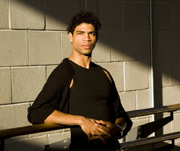 Carlos Acosta has no lack of companies wanting to hire his services, but he is obviously a believer in self help too. Hence the two seasons he is showing in London this summer. Just completing is what he carefully does not call “Acosta and Friends” à la Nureyev (but plenty of others do just that), given for a week at Sadler’s Wells, 18-23 July; to come at the Coliseum is the third London showing of his spectacle “Tocororo”, a dance tale inspired by his own life. READ MORE
Carlos Acosta has no lack of companies wanting to hire his services, but he is obviously a believer in self help too. Hence the two seasons he is showing in London this summer. Just completing is what he carefully does not call “Acosta and Friends” à la Nureyev (but plenty of others do just that), given for a week at Sadler’s Wells, 18-23 July; to come at the Coliseum is the third London showing of his spectacle “Tocororo”, a dance tale inspired by his own life. READ MORE
The Royal Danish Ballet at Grønnegaarden
by Eva Kistrup
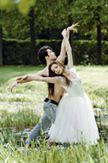 Had I not read Frank Andersen's programme notes, I would probably have written a review that merely discussed the value of each item on the menu and mused about the pros and cons of outdoor summer performances. I might even have touched the subject of how far a company should go to attract a
new audience. But I did read the notes, in which Andersen promises "an exiting programme with popular pieces by some of best choreographers in the World danced by some of the best dancers in the World." READ MORE
Had I not read Frank Andersen's programme notes, I would probably have written a review that merely discussed the value of each item on the menu and mused about the pros and cons of outdoor summer performances. I might even have touched the subject of how far a company should go to attract a
new audience. But I did read the notes, in which Andersen promises "an exiting programme with popular pieces by some of best choreographers in the World danced by some of the best dancers in the World." READ MORE
San Francisco Letter No. 13
The West Wave Festival
by Rita Felciano
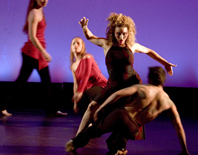 The WestWave Dance Festival is exhausting. A mixed-bill program every other night tests even the most dedicated dancer watcher’s stamina. It doesn’t help that so many of the choreographers are young and relatively inexperienced and, it must be said, some, with little talent. READ MORE
The WestWave Dance Festival is exhausting. A mixed-bill program every other night tests even the most dedicated dancer watcher’s stamina. It doesn’t help that so many of the choreographers are young and relatively inexperienced and, it must be said, some, with little talent. READ MORE
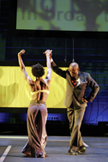 “’Blind Date’” is dense visually, sonically, textually,” Bill T. Jones writes at the end of the program note for his latest work. He’s putting it mildly. Inspired by contemporary events and trends, filled with references to honor, valor, progress, tolerance, patriotism, it practically overflows with ideas, and its sprawling, not always clearly focused action seems ready to overflow even on the vast stage of LaGuardia High School’s Concert Hall. READ MORE
“’Blind Date’” is dense visually, sonically, textually,” Bill T. Jones writes at the end of the program note for his latest work. He’s putting it mildly. Inspired by contemporary events and trends, filled with references to honor, valor, progress, tolerance, patriotism, it practically overflows with ideas, and its sprawling, not always clearly focused action seems ready to overflow even on the vast stage of LaGuardia High School’s Concert Hall. READ MORE
Ronald K. Brown/EVIDENCE and Philadanco
by Naima Prevots
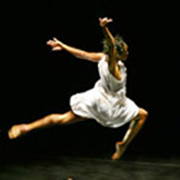 Ronald K. Brown/EVIDENCE and PHILADANCO joined forces for an evening featuring a world premiere and older choreography by Brown, as well as pieces by George Faison and Christopher L. Huggins, and while the performing and technical virtuosity were supreme, the choreographic statements were weak and repetitive.
The audience cheered for the numerous lifts and leg extensions, hip swivels, fast footwork and turns, but as my eyes registered many of the same repeated movement patterns, I wondered if the spectacular dancers were being cheated by an overemphasis on virtuosity, and the lack of artistic and choreographic challenges. The program was organized so that each company had a piece to themselves, while the premiere involved both companies. READ MORE
Ronald K. Brown/EVIDENCE and PHILADANCO joined forces for an evening featuring a world premiere and older choreography by Brown, as well as pieces by George Faison and Christopher L. Huggins, and while the performing and technical virtuosity were supreme, the choreographic statements were weak and repetitive.
The audience cheered for the numerous lifts and leg extensions, hip swivels, fast footwork and turns, but as my eyes registered many of the same repeated movement patterns, I wondered if the spectacular dancers were being cheated by an overemphasis on virtuosity, and the lack of artistic and choreographic challenges. The program was organized so that each company had a piece to themselves, while the premiere involved both companies. READ MORE
"Spring Awakening"
by Susan Reiter
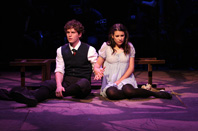 The few recent new musicals that are not attempts to cash in on the “juke box musical” phenomenon, that are serious attempts to propel the form forward, have not been ones in which dance plays an important role. Last year’s stunning “Light in the Piazza,” now about to launch its national tour, has many virtues, but its luminous staging does not give pride of place to choreography. “Grey Gardens,” an intriguing recent off-Broadway production that is making the move to Broadway in November, features two riveting central characters and a story that spans three decades, but relies only slightly on dance. Donald Byrd’s contribution as choreographer of “The Color Purple,” one of last season’s big (and more old-fashioned) new musicals, is more substantial, and did attract some attention (and a Tony nomination) for robust ensemble dances that help set the tone as the show’s saga winds its way through the decades. But since Twyla Tharp won the 2003 Tony Award for choreography for “Movin’ Out,” the award has gone to those who worked on revivals, rather than new shows. READ MORE
The few recent new musicals that are not attempts to cash in on the “juke box musical” phenomenon, that are serious attempts to propel the form forward, have not been ones in which dance plays an important role. Last year’s stunning “Light in the Piazza,” now about to launch its national tour, has many virtues, but its luminous staging does not give pride of place to choreography. “Grey Gardens,” an intriguing recent off-Broadway production that is making the move to Broadway in November, features two riveting central characters and a story that spans three decades, but relies only slightly on dance. Donald Byrd’s contribution as choreographer of “The Color Purple,” one of last season’s big (and more old-fashioned) new musicals, is more substantial, and did attract some attention (and a Tony nomination) for robust ensemble dances that help set the tone as the show’s saga winds its way through the decades. But since Twyla Tharp won the 2003 Tony Award for choreography for “Movin’ Out,” the award has gone to those who worked on revivals, rather than new shows. READ MORE
Footworks Percusssive Dance Ensemble
by Naima Prevots
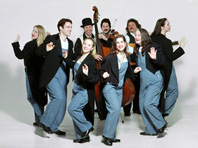 Surrounded by children, parents, and grandparents, and sitting on a blanket on the grass outdoors, I watched for an hour while this group of five dancers and two musicians presented an entrancing, very professional and informative program. With a combination of performance and audience participation, the group succeeded in involving all ages sitting on the grass. Showing us beautifully executed samples of traditional and contemporary clogging, African-American stepping, South African boot dancing, inventive tap dance, and fine improvisation, they managed to teach everyone about rhythm in many manifestations. There were imaginative explorations of voice, body parts, clapping, and more, all clearly explained and demonstrated, and all creating happy involvement for the two year olds and the seventy year olds. READ MORE
Surrounded by children, parents, and grandparents, and sitting on a blanket on the grass outdoors, I watched for an hour while this group of five dancers and two musicians presented an entrancing, very professional and informative program. With a combination of performance and audience participation, the group succeeded in involving all ages sitting on the grass. Showing us beautifully executed samples of traditional and contemporary clogging, African-American stepping, South African boot dancing, inventive tap dance, and fine improvisation, they managed to teach everyone about rhythm in many manifestations. There were imaginative explorations of voice, body parts, clapping, and more, all clearly explained and demonstrated, and all creating happy involvement for the two year olds and the seventy year olds. READ MORE